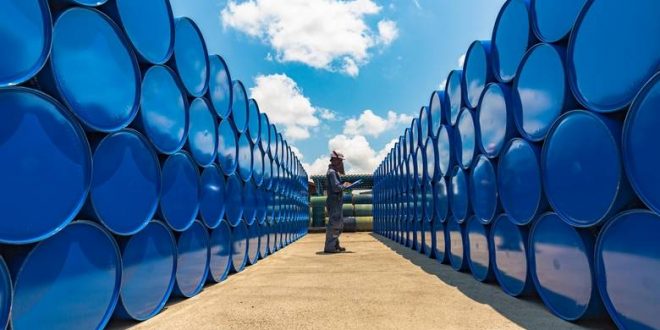The increasingly bullish sentiment in oil markets has several analysts to predict $100 in 2022, but some think that prices could hit that level in 2021 already
Oil’s rally to above $70 a barrel has spurred talk of $100 oil—an unthinkable outlook at this time last year when economies and global crude demand were reeling from the pandemic. But now recovering demand and still tight supply are supporting oil prices and fueling forecasts that there is a chance we could see $100 oil again, for the first time since 2014.
Several factors are supporting this very bullish view on oil right now. Global crude oil demand is expected to surge, in the biggest jump ever over the next six months, as Goldman Sachs said earlier this year. Worldwide consumption of oil is expected to nearly reach pre-pandemic levels in the fourth quarter this year and to exceed 2019 demand in 2022, setting a new record for annual global oil demand. The economic rebound around the world, combined with easing or end of COVID-related restrictions, including for travel, is set to incentivize demand for fuels and petrochemicals.
Then there’s another bullish factor for oil on the supply side. The OPEC+ alliance is firmly in control of a large part of global crude supply and prefers to keep the market tight this year with a gradual unwinding of the cuts. The Saudi Energy Minister, Prince Abdulaziz bin Salman, is signaling continued caution in OPEC+ as he has been warning traders for months not to bet against oil.
“There will always be a good amount of supply to meet demand, but we’ll have to see demand before you see supply,” Abdulaziz bin Salman said at a forum in Russia earlier this month.
This brings us to what is arguably the single largest factor – barring a second worldwide lockdown – for oil prices for the rest of the year: how will OPEC+ act in unwinding the 5.8 million barrels per day (bpd) they are still keeping off the market. That is, how high OPEC+ would allow oil prices to run.
A faster-than-expected return of those barrels, plus potential additional supply from Iran if the ongoing talks about the nuclear deal succeed at some point this summer, would cool oil prices.
Yet, OPEC could be willing to wait a little longer because at these higher oil prices, government revenues of the petrostates would benefit after the billions of oil revenue wiped out during the pandemic.
“OPEC+ is currently reveling in higher prices and recouping some of the US$335 billion of revenue the group ‘lost’ last year when the market collapsed. A Brent price in line with our 2021 forecast of US$69.30 would lift OPEC’s revenues close to 2019 levels on 10% less volume,” Wood Mackenzie said this week.
For OPEC+, the balancing act needs to be carefully measured because too high oil prices would slow the global economic recovery and incentivize production out of OPEC if oil stays at above $70 for a longer period of time. The U.S. shale patch continues to keep capital discipline and expects record free cash flow this year, but a sustained period of high oil prices could trigger more supply next year.
“The mood will change if prices remain at these higher levels well into 2022 and show signs of sustained recovery,” according to Ann-Louise Hittle, Vice President Macro Oils at WoodMac, and her team.
The bullish sentiment on the market in recent weeks has resulted in the world’s largest commodity traders not ruling out the possibility of $100 oil. Most of the top executives see oil prices “higher from here” for the rest of the year, although Vitol’s CEO Russell Hardy, warned the overenthusiastic bulls that “we’re in a slightly artificial market at the moment,” when saying that $100 per barrel oil is “of course a possibility.”
Predictions of $100 oil seem to be more common for the coming years, rather than this year, due to an expected supply deficit, especially around 2025, amid low investments in new supply and still growing global oil demand.
“If you’re cutting supply without at the same time addressing your demand that is when you can get price dislocations,” Glencore’s Head of Oil Marketing, Alex Sanna, told the FT Commodities Global Summit this week, adding that $100 oil was now looking more likely than before.
“You’re really only one or two events away from a material spike in oil prices,” Sanna said.

 Iran Energy News Oil, Gas, Petrochemical and Energy Field Specialized Channel
Iran Energy News Oil, Gas, Petrochemical and Energy Field Specialized Channel



